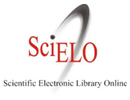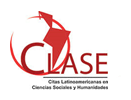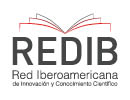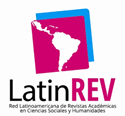Design and validation of the pseudoscientific thinking scale
DOI:
https://doi.org/10.21142/DES-1501-2023-0010Keywords:
pseudoscience, pseudoscientific thinking, validity and reliabilityAbstract
The objective of this research was to design and validate a pseudoscientific thinking scale. The study is of an instrumental type, whose sample consisted of 686 Peruvian adult participants (42% women). Regarding construct validity, an exploratory (EFA) and confirmatory (CFA) factor analysis were performed; and for reliability evidence, McDonald’s omega coefficient was used. The results of the EFA showed a unidimensional model of 8 items. The CFA presented an adequate fit, c2(20) = 35.5, CFI = .995, RMSEA = .047, SRMR = .026, TLI = .994 thus confirming the one-dimensional structure with factor loadings between the values of l = .68 and l = .86 (w = .92). Finally, the academic and social implications of this new psychometric instrument are discussed.
Downloads
References
Berkun, S. (2010). The myths of innovation. O’Reilly Media, Inc.
Beyerstein, B. L. (1999). Whence cometh the myth that we only use ten percent of our brains. En S. Della Sala (Ed.), Mind myths: Exploring popular assumptions about the mind and brain (pp. 314-335). J. Wiley & Sons.
Bordes, M. (2017). Las trampas de Circe: falacias lógicas y argumentación informal. Cátedra.
Blanco. F. (2016). ¿Crees en los fantasmas? Quizá estés mostrando un sesgo cognitivo. Ciencia Cognitiva, 10(1), 5-7. https://www.researchgate.net/profile/Fernando-Blanco-11/publication/313770436_Crees_en_los_fantasmas_Quiza_estes_mostrando_un_sesgo_cognitivo/links/58a57835a6fdcc0e07657fe6/Crees-en-los-fantasmas-Quiza-estes-mostrando-un-sesgo-cognitivo.pdf
Brotherton, R. y French, C. C. (2014). Belief in conspiracy theories and susceptibility to the conjunction fallacy. Applied Cognitive Psychology, 28(2), 238-248. https://doi.org/10.1002/acp.2995
Bunge, M. (1985). Pseudociencia e ideología. Alianza Editorial.
Cárdenas, M., Gallardo, I., Adaos, R. y Bahamondes, J. (2013). Creencias paranormales en una muestra de estudiantes de psicología de universidades chilenas. Salud & Sociedad, 4(1), 10-23.
Dagnall, N., Parker, A. y Munley, G. (2007). Paranormal belief and reasoning. Personality and Individual Differences, 43(6), 1406-1415. https://doi.org/10.1016/j.paid.2007.04.017
Eckblad, M. y Chapman, L. (1983). Magical ideation as an indicator of schizotypy. Journal of Consulting and Clinical Psychology, 51(2), 215-225. http://dx.doi.org/10.1037/0022-006X.51.2.215
Facione, P. A. (2007). Pensamiento crítico. ¿Qué es y por qué es importante? Insight Assessment. California Academic Press. https://eduteka.icesi.edu.co/modulos/6/134/733/1?url=6/134/733/1
Fasce, A. (2017). What do we mean when we speak of pseudoscience? The development of a demarcation criterion based on the analysis of twenty-one previous attemps. Disputatio. Philosophical Research Bulletin, 6(7), 459-488.
Fasce, A. y Picó, A. (2019). Conceptual foundations and validation of the Pseudoscientific Belief Scale. Applied Cognitive Psychology, 33(4), 617-628. https://doi.org/10.1002/acp.3501
Fasce, A., Avendaño, D. y Adrián‐Ventura, J. (2021). Revised and short versions of the pseudoscientific belief scale. Applied Cognitive Psychology, 35(3), 828-832.
Freud, S. (1913). Tótem y tabú y otras obras. http://www.bibliopsi.org/docs/freud/13%20-%20Tomo%20XIII.pdf
Hansson, S. O. (2017). Science denial as a form of pseudoscience. Studies in History and Philosophy of Science Part A, 63, 39-47. https://doi.org/10.1016/j.shpsa.2017.05.002
Hansson, S. O. (2017). Ciencia y pseudociencia. En E. Zalta (ed.), La enciclopedia de filosofía de Stanford. https://plato.stanford.edu/entries/pseudo-science/
Holgado-Tello, F., Chacon-Moscoso, S., Barbero-Garcia, I. y Vila-Abad, E. (2010). Polychoric versus Pearson correlations in exploratory and confirmatory factor analysis of ordinal variables. Quality and Quantity, 44, 153-166. https://doi.org/10.1007/s11135-008-9190-y
JamesRandiFoundation. (25 de septiembre de 2014). Massimo Pigliucci – Demarcation: Science and Pseudocience TAM 2013 [Video]. YouTube. https://www.youtube.com/watch?v=zBUKQWM5Jf0
Johnson, S. B., Park, H. S., Gross, C. P. y Yu, J. B. (2018). Use of alternative medicine for cancer and its impact on survival. Journal of the National Cancer Institute, 110(1), 121-124. https://doi.org/10.1093/jnci/djx145
Johnson, S., Park, H., Gross, C. y Yu, J. (2018). Complementary medicine, refusal of conventional cancer therapy, and survival among patients with curable cancers. JAMA Oncology, 4(10), 1375-1381. https://jamanetwork.com/journals/jamaoncology/fullarticle/2687972
Jones, J. (2005). Memorandum opinion. https://upload.wikimedia.org/wikipedia/commons/8/8d/Kitzmiller_v._Dover_Area_School_District.pdf
Kahneman, D. (2012). Pensar rápido, pensar despacio. Random House Group.
Kingdon, B., Egan, S. y Rees, C. (2012). The illusory beliefs inventory: A new measure of magical thinking and its relationship with obsessive compulsive disorder. Behavioural and Cognitive Psychotherapy, 40, 39-53. https://doi.org/10.1017/S1352465811000245
Lamberty, P. e Imhoff, R. (2018). Powerful pharma and its marginalized alternatives? Effect of individual differences in conspiracy mentality on attitudes towards medical approaches. Social Psychology, 49(5), 255-270. https://doi.org/10.1027/1864-9335/a000347
Lilienfeld, S., Lynn, S. y Lohr, J. (2003). Science and pseudoscience in clinical psychology. Guilford.
López De Pomar, F. (2019). Pensamiento mágico en la psicología: representaciones en docentes. Persona, 22(2), 111-133. https://doi.org/10.26439/persona2019.n022(2).4567
López De Pomar, F. y Lira Luttges, B. (2022). Evaluación psicométrica de una escala de creencias conspirativas para población peruana. Persona, 25(1), 33-51. https://doi.org/10.26439/persona2022.n025(1).5870
Lloret-Segura, S., Ferreres-Traver, A., Hernández-Baeza, A. y Tomás-Marco, I. (2014). El análisis factorial exploratorio de los ítems: una guía práctica, revisada y actualizada. Anales de Psicología, 30(3), 1151-1169. https://doi.org/10.6018/analesps.30.3.199361
National Science Board. (2018). Science & Engineering Indicators 2018. Science and Technology: Public Attitudes and Understanding. National Science Foundation, US. https://www.nsf.gov/statistics/2018/nsb20181/assets/404/science-and-technology-public-attitudes-and-understanding.pdf
Organización para la Cooperación y el Desarrollo Económicos, OCDE. (2017). Marco de Evaluación y de Análisis de PISA para el Desarrollo: Lectura, matemáticas y ciencias. Versión preliminar. OCDE. https://www.oecd.org/pisa/aboutpisa/ebook%20-%20PISA-D%20Framework_PRELIMINARY%20version_SPANISH.pdf
Piaget, J. (1929). The child´s conception of the world. https://archive.org/details/childsconception01piag
PISA 2015 Science Framework. (Marzo de 2013). Report. OECD.
Piejka, A. y Okruszek, Ł. (2020). Do you believe what you’ve been told? Morality and scientific literacy as predictors of pseudoscience susceptibility. Applied Cognitive Psychology, 34(5), 1072-1082. https://doi.org/10.1002/acp.3687
Prike, T., Arnold, M. y Williamson, P. (2017). Psychics, aliens, or experience? Using the Anomalistic Belief Scale to examine the relationship between type of belief and probabilistic reasoning. Consciousness and Cognition, 53, 151-164. https://doi.org/10.1016/j.concog.2017.06.003
Popper, K. (2007). Conocimiento objetivo. Un enfoque evolucionista. (5.° ed.). Tecnos.
Rogers, P., Fisk, J. E. y Lowrie, E. (2018). Paranormal belief, thinking style preference and susceptibility to confirmatory conjunction errors. Consciousness and Cognition, 65, 182-196. http://clok.uclan.ac.uk/24150/1/24150%20BIP07e%20CF%20%20Think%20Style_Write-Up%20%28ALL%29_FINAL_PDF.pdf
Sagan, C. (2017). El mundo y sus demonios. Crítica.
Semakula, D. (2017). Effects of the Informed Health Choices podcast on the ability of parents of primary school children in Uganda to assess claims about treatment effects: a randomised controlled trial. The Lancet, 390(10092), 389-398. https://doi.org/10.1016/S0140-6736(17)31225-4
Shermer, M. (2009). Por qué creemos en cosas raras. Pseudociencia, superstición y otras confusiones de nuestro tiempo. (2.a ed.). Alba Editorial.
Thalbourne, M. A. y Delin, P. S. (1993). A new instrument for measuring the sheep-goat variable: Its psychometric properties and factor structure. Journal of the Society for Psychical Research, 59(832), 172-186.
Teovanović, P., Lukić, P., Zupan, Z., Lazić, A., Ninković, M. y Zelzej, I. (2021). Irrational beliefs differentially predict adherence to guidelines and pseudoscientific practices during the COVID-19 pandemic. Applied Cognitive Psychology, 35(2), 486-496. https://pubmed.ncbi.nlm.nih.gov/33362344/
Tobacyk, J. (2004). A revised paranormal belief scale. The International Journal of Transpersonal Studies, 23(23), 94-98. https://digitalcommons.ciis.edu/cgi/viewcontent.cgi?article=1235&context=ijts-transpersonalstudies
Tobacyk, J. (1984). Paranormal belief and college grade point average. Psychological Reports, 54(1), 217-218. https://doi.org/10.2466/pr0.1984.54.1.217
Tobacyk, J. y Milford, G. (1983). Belief in paranormal phenomena: Assessment instrument development and implications for personality functioning. Journal of Personality and Social Psychology, 44(5), 1029-1037. https://doi.org/10.1037/0022-3514.44.5.1029
Trizano-Hermosilla, I. y Alvarado, J. M. (2016). Best alternatives to Cronbach’s Alpha reliability in realistic conditions: Congeneric and asymmetrical measurements. Frontiers in Psychology, 7(34). https://doi.org/10.3389/fpsyg.2016.00769
Tylor, E. (1920). Primitive culture. Researches into the development of mythology, philosophy, religion language, art, and custom. https://ia902205.us.archive.org/32/items/primitiveculture01tylouoft/primitiveculture01tylouoft.pdf
van Elk, M. (2019). Socio-cognitive biases are associated to belief in neuromyths and cognitive enhancement: A pre-registered study. Personality and Individual Differences, 147, 28-32. https://doi.org/10.1016/j.paid.2019.04.014
Wagner-Egger, P. D. (2018). Creationism and conspiracism share a common teleological bias. Current Biology, 28(16), R867-R868. https://doi.org/10.1016/j.cub.2018.06.072
Zaboski, B. A. y Therriault, D. J. (2019). Faking science: scientificness, credibility, and belief in pseudoscience. Educational Psychology, 40(7), 820-837. https://doi.org/10.1080/01443410.2019.1694646
Downloads
Published
Issue
Section
License

Esta obra está bajo una licencia http://creativecommons.org/licenses/by-nc-sa/4.0/



















